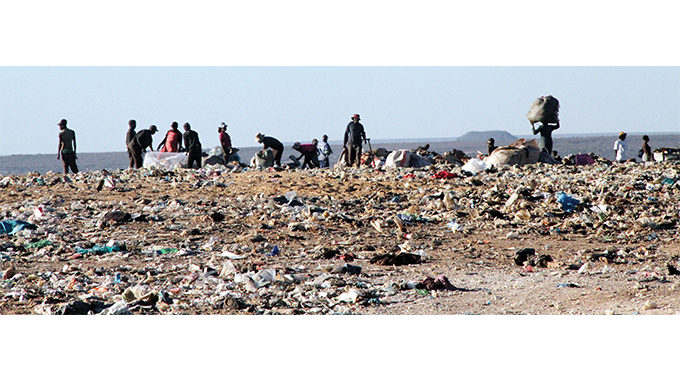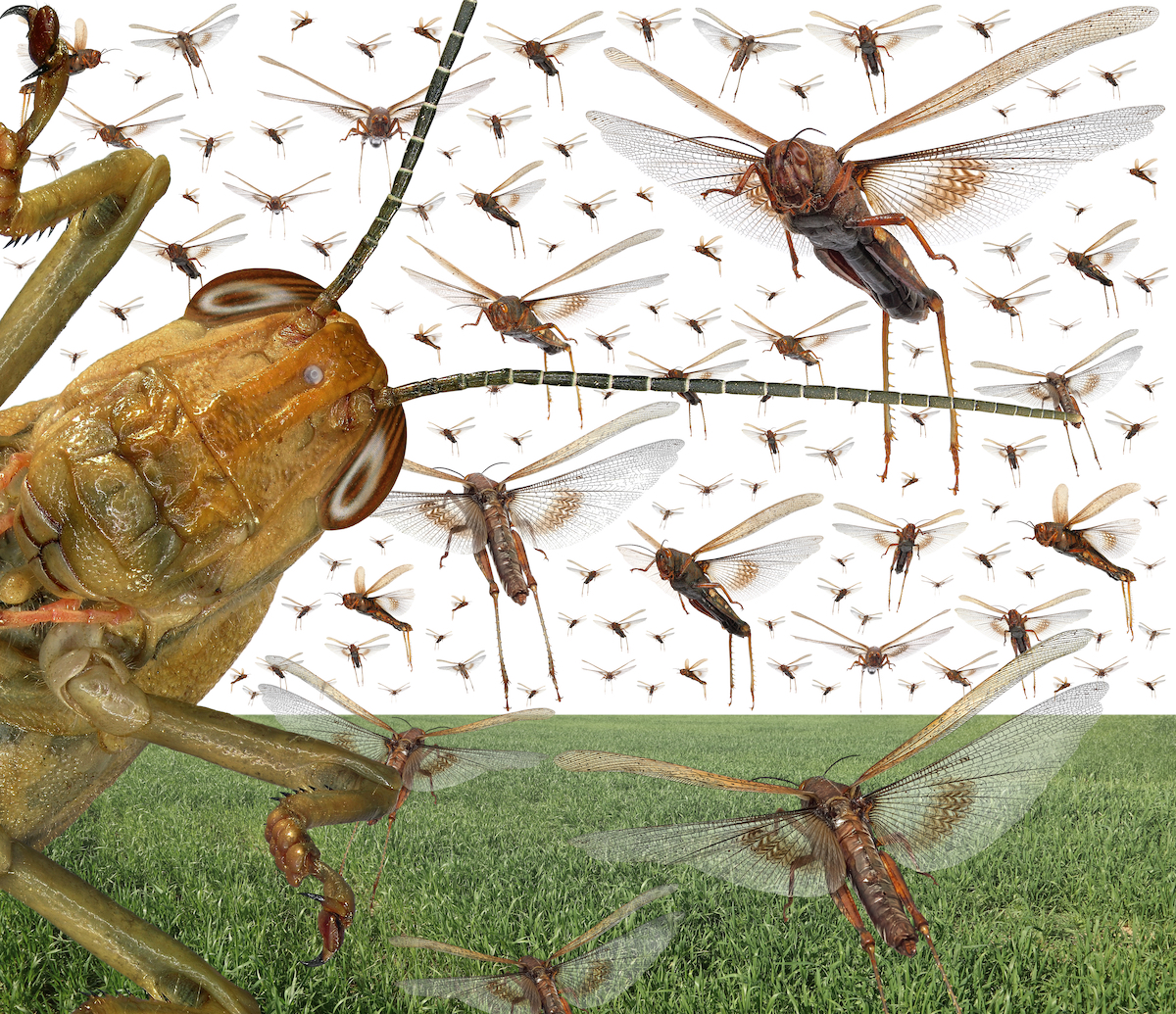Migratory locusts threaten Sadc food security
Members of Parliament from the SADC Region are calling for a concerted regional effort to prevent African Migratory Locusts (AML) exacerbating an already dire food security situation, amid reports that the destructive pests have become “smarter”.
The locusts are already wreaking havoc in several SADC countries that include Botswana, Namibia, Zambia, Zimbabwe and Angola, stoking fears of famine in a region in which nearly 44,5 million people are already food insecure.
Dr Lewis Hove, the Resilience Team Leader at the Food and Agriculture Organisation (FAO)’s Sub Regional Office for Southern Africa last week told the lawmakers that scientists were baffled by an unprecedented observation that the locusts were now surviving in winter when there is little for them to eat.
“That is a problem we are seeing for the first time. It (AML) is not behaving the way it normally behaves. Maybe the temperatures are warmer and they can survive on things they don’t normally graze on. It eats all the cereals and pasture for livestock,” Hove told the MPs who belong to the Standing Committee on Food, Agriculture and Natural Resources of the SADC Parliamentary Forum. Their Committee met virtually.
Many economies in Southern Africa rely on agriculture, with an estimated 70 percent of the region’s citizens eking their livelihoods in the sector. Although the AML outbreak is the talk of the moment, Hove said there were “much more threats the region faces to food security”.
He said: “The agriculture sector is still reeling from the catastrophic impact of climate change and recurrent droughts, with dire humanitarian, environmental and productivity consequences. The impact of climate change has been compounded by the serious consequences of trans-boundary plants pests and diseases.”
In recent years, climate change has been so severe on crop production that even top grain-producing countries that include South Africa and Zambia were struggling to meet their own needs.
Apart from causing droughts and floods in parts of SADC, climate change has triggered an outbreak of Fruit flies that have been decimating fruits in all SADC Member States save Lesotho, with annual losses due to the flies in Africa conservatively estimated at US$2 billion.
Added to this, the Fall Armyworm, which landed in Southern Africa in 2017 and is now present in all SADC countries except Lesotho, has caused losses of over 20 million Metric Tonnes of maize in 12 African countries — enough to feed 100 million people.
As if that is not bad enough, tomato farmers all over SADC are up against Tomato Leaf Miner disease, which is also known as Tuta absoluta. Hove said yield losses to this “terrible disease” could reach “100 percent under high pest infestation with significant impact on tomato production, income and trade”.
Tomato is widely regarded as a crop grown or sold by women in informal markets, so the disease is reportedly disproportionately affecting women.
Other diseases threatening food security in the region include the Banana Fusarium wilt, which wiped out bananas on 1 550 hectares and caused the laying off of 2 500 farm workers at Matanuska Farm in Burma Valley in Zimbabwe in 2013.
In Angola, DRC, Malawi, Mozambique, Tanzania and Zambia, farmers are cracking their heads over the Banana Bunchy top virus, while in other parts of Africa Cassava Brown Streak virus disease and Wheat Blast disease are thwarting farmers’ efforts.
The AML is the latest on a list of pests posing a serious danger to crop production and livestock grazing during the 2020/21 season. The pests normally breed in Botswana and Angola but have spread to many countries when normal to above normal rainfall has been forecasted in most parts of the region.
“We need to make sure that farmers capitalise on that (good season) to recover from the series of droughts,” Hove said.
He suggested that to beat the locusts, SADC Member States could learn from the insects and try to outwit them at their game.
He said: “As they fly together, they are very smart. Individually, they might be foolish but as a swarm they coordinate very well. That’s why it is important that we work as a region, not as individual countries. They can fly into the next country and we can end up with blame games.”
The MPs agreed that responses by individual countries were no match to the elusive locusts. They called on SADC countries to coordinate their responses and use standard chemicals to kill the pests.
Hove warned: “If we don’t control this pest right now — keep it where it is, kill the swarms and the hoppers (young ones) — we are likely to see the livelihoods of at least 2,3 million people already in acute food security further affected.”
FAO, working in concert with the SADC Secretariat, has set up a Southern Africa Emergency Locust Response and Preparedness Project.
During the meeting, MPs shared lessons and experiences from responding to the pest infestation. Zimbabwe’s Senator Tambudzani Mohadi said her country had invested in training locals to support surveillance efforts.
She said: “Making use of funding from development partners through the Zimbabwe Resilience Building Fund (ZRBF), the Plant Protection Department conducted 163 Training of Trainers with participants drawn from various stakeholders and to date over 23 000 farmers have been trained adequately on Locusts Bio Identification, surveillance, monitoring and management of any invasions and their breeding grounds.”
An MP from Madagascar, Dr Rajaobelina Lava Herizo said AML had affected about 500 hectares in the hard to reach south-west parts of the country since 2013.
“They are threatening livelihoods of communities in those areas,” he said. He added that chemicals used to control the locusts were not effective and local communities were using “traditional ways” to try to save their crops.
Herizo said Madagascar was boosting satellite surveillance on the locusts while using drones to detect them with assistance from FAO.
From the Kingdom of Eswatini, lawmaker Princess Phumelele Dlamini said although her country was on the lookout.
“The country is on high alert to ensure routine surveillance at farming communities across all ecological regions. This is being done through the extension service of the Ministry of Agriculture, Malkerns Research Centre, and farmers association. The National Disaster Management Agency (NDMA) has also been made aware of the possible disaster which may impact the country’s food security,” she said.
The Princess called for a regional approach and “adoption of early warning and information sharing strategies for the SADC Region”.
Hove concurred and contended that national responses including spraying had largely failed due to lack of effective coordination and surveillance in the face of inadequate resources.
The MPs called for increased awareness and advocacy for adequate resources to mount a regional and coordinated response not just to AML, but other transboundary pests and plant diseases. They agreed on the need for their governments to set aside resources to make the envisaged regional response a reality.
Granted that AML totally disregards national boundaries, the MPs agreed that confronting the pests as individual nations would be futile.
The MPs agreed, also, on the urgent need to deepen and broaden knowledge on climate change and its effects. To support pre-emptive action, the MPs resolved to advocate for resources to be put in place to set early warning systems and initiate action.
Ms Chikondi Chabvuta from Action Aid warned that the outbreak of AML and other pests would have a “multiplier effect on the already precarious food and nutrition situation, which has been compounded by Covid-19”.
She called for “integrated case management” of the locust outbreak.-heral.cl.zw










